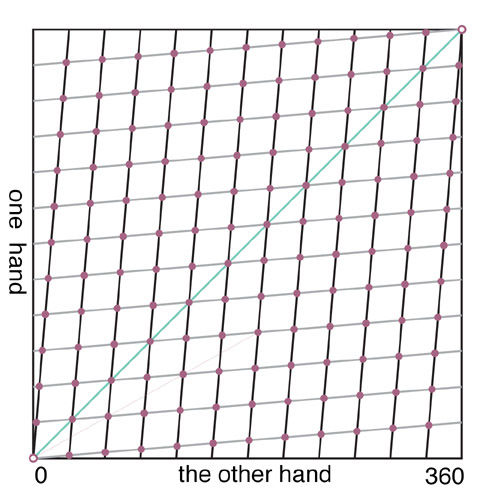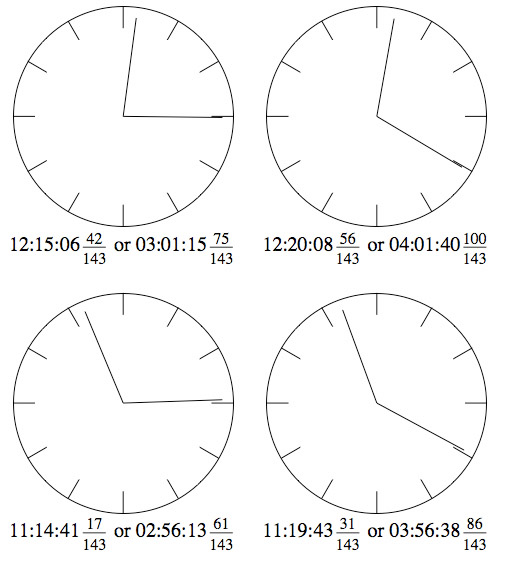CS. Perfect Sums
First, let’s answer last week’s puzzle on clocks!
As it turns out, there are 143 times in each twelve hour period for which you can switch the hands of a clock and still have a legitimate time! It’s easy to find these by plotting the positions of the hands throughout the day:

The darker lines show the positions of the hands if the vertical scale is for the minute hand and the horizontal scale is for the hour hand. The lighter lines reverse this. Where the lines meet, the position could make sense with either hand in either position.
If you count these intersections, you’ll see there are 143 times when the hands could be switched. The times on the green diagonal are when the two hands coincide– there are 11 of these, and the time is not ambigious since the time can be read in only one way. So there are 132 ambiguous moments. Hey– as Kyle asks, what is a better name for those special times of the day?
Here are some more of these:

.
Ok, on to the next puzzle!
A set of numbers is perfectly summing if each of the numbers in it divides into the total. Can you always throw in some more numbers to a set to make it perfectly summing?
For example, {3,5} is not perfectly summing, but we can increase it to {3, 5, 10, 12, 30}; this is perfectly summing. Kyle asked about {4,9}– there is one solution with a total of 864; but uhm, this might not be optimal.
The real question is what is the general method? Try it out on {7,9,11}!

 mathbun.com
mathbun.com
georgelu61 said,
August 7, 2007 at 11:15 pm
I believe 36 is the lowest possible solution
4, 9, 2, 3, 18 works : )
btw
i thought of two decent names for the ambiguous times-
ambichronic, from an etymological standpoint a good choice
but isochronic has a nice ring to it :)
nklein said,
August 9, 2007 at 3:28 pm
I like ambichronic… but I’m also partial to handbivalent.
foley said,
August 13, 2007 at 12:21 pm
How about Coincident times.
Any hand position on the clock may or may not have a coincident time or may be a coincident time. At any ambiguous moment the hand position also represents that moment and its coincident time.
12:00:00 and the other 10 aligned times do not have coincident times since the hands are aligned on each other.